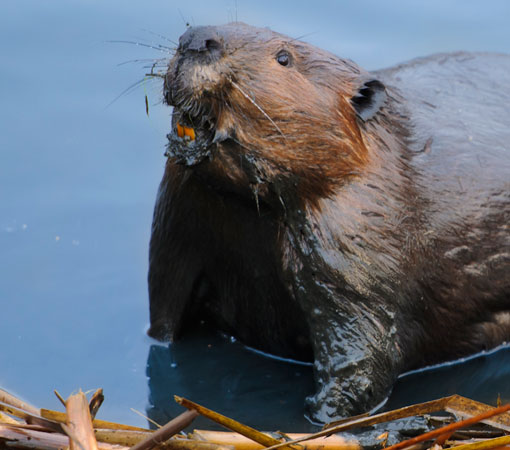In the green space behind our home, there lies a stream, trees, lush bullrush.
Despite being located in the heart of a suburbia and bounded by roads and backyards, toad, mallard, Canadian goose, raccoon, skunk, fox, coyote and deer either visit or call this little swath of land home. Many people walk, run, or cycle the path that winds its way around the green space or sit on the park benches scattered along the path and listen to the birds sing and enjoy the tranquility of the meadow.
The area is low lying and the meadow itself serves as a flood plane when required. The water levels were predictable, rising somewhat after a thaw or a significant rain fall. That was until the beavers came.
It started with a dam being built and pretty soon after a lodge was raised. When living in the city, it’s amazing to see wildlife quite literally right outside your door. On early morning walks, you could witness the beaver having a snack and gnawing on a tree or branch somewhere, it was beautiful.
But pretty soon, it wasn’t so nice anymore. The water level rose to unacceptable levels, about two to three feet, meaning you could not traverse the path without getting both feet wet in some areas. And then the there were the trees. They were being felled left and right. Huge beautiful trees, gone by the teeth of a wood-craving, feeding-frenzied beaver. An average beaver can cut down 200 trees a year. That would mean in a couple years there would be no trees left at all. And due to the abnormally high water levels, geese and ducks could no longer nest in the area (although some did next right on top of the beaver lodge). Dramatic changes to the ecosystem all at the hands, or feet and teeth, of beavers.
The city of Markham would not relocate the beavers because there were now young ones in the picture, two little kits. Some stop gap measures were attempted. City workers would break up the dam, but the beaver would work busily to reconstruct, and each time the dam would get larger and more durable. City workers even installed a storm drain with a diameter of a foot that ran underneath the dam, but the beavers soon figured that one out as well.
[edit: The beavers have since been trapped and relocated. The dam was completely broken up and a revitalization project involved placing river rocks on the bed and sides of the stream and replanting of trees and shrubs. Things in the meadow are now back to normal.]Here are some pictures of the beaver at work and all the damage that they bestowed upon our dear meadow.
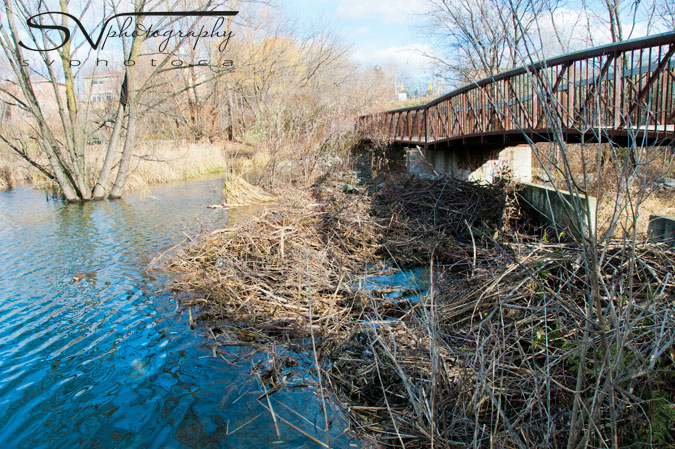
The dam the beaver built. Water on the left is about 2-3 ft. higher than on the right.

Caught in the act. The beaver pauses from dam building to flash his smile along with his distinctive orange teeth

An average beaver can cut down 200 trees a year. Here, I count nine trees felled by the teeth of this beaver
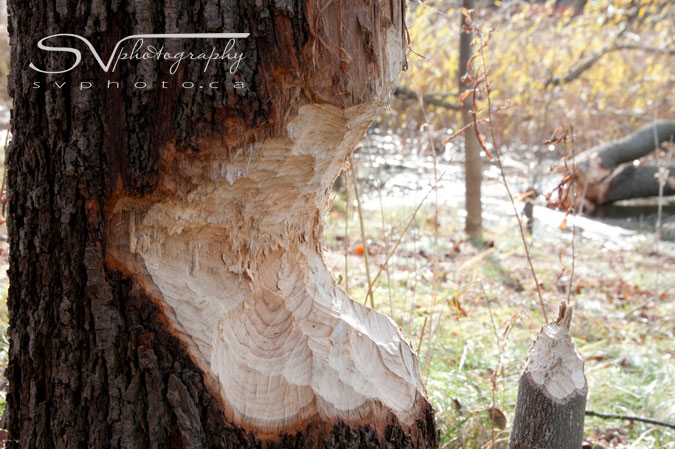
This tree is half gnawed through. In a couple of days, it will be felled.
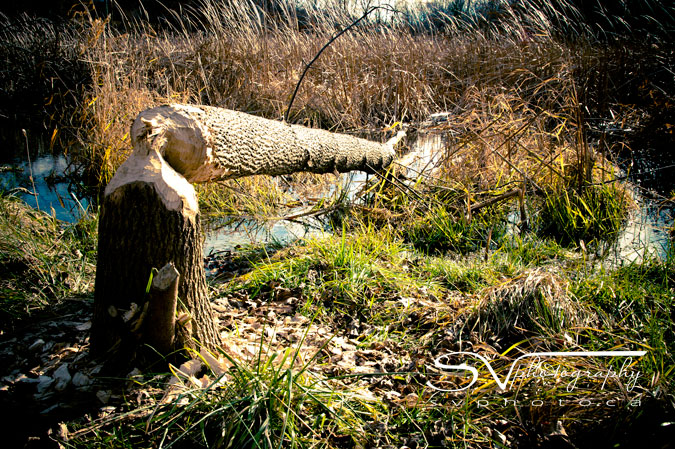
What a waste! The beaver cuts down the tree and then is done with it. What ever happened to finishing what’s on your plate?
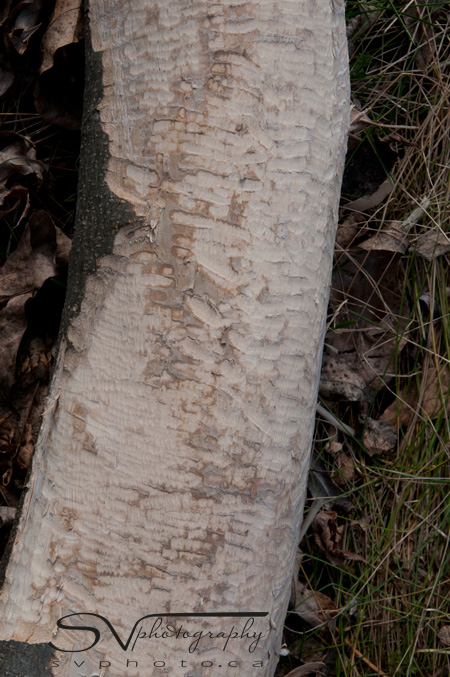
The beaver kits would gnaw on felled trees for their food.
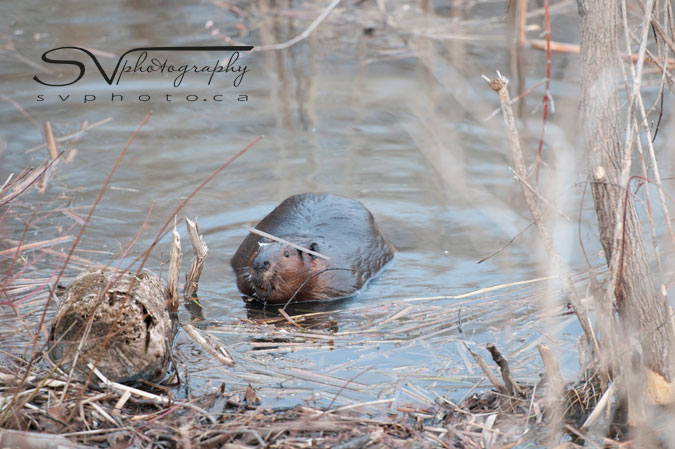
The beaver creates channels through the water to transport wood and reeds to the dam
Share this Post

